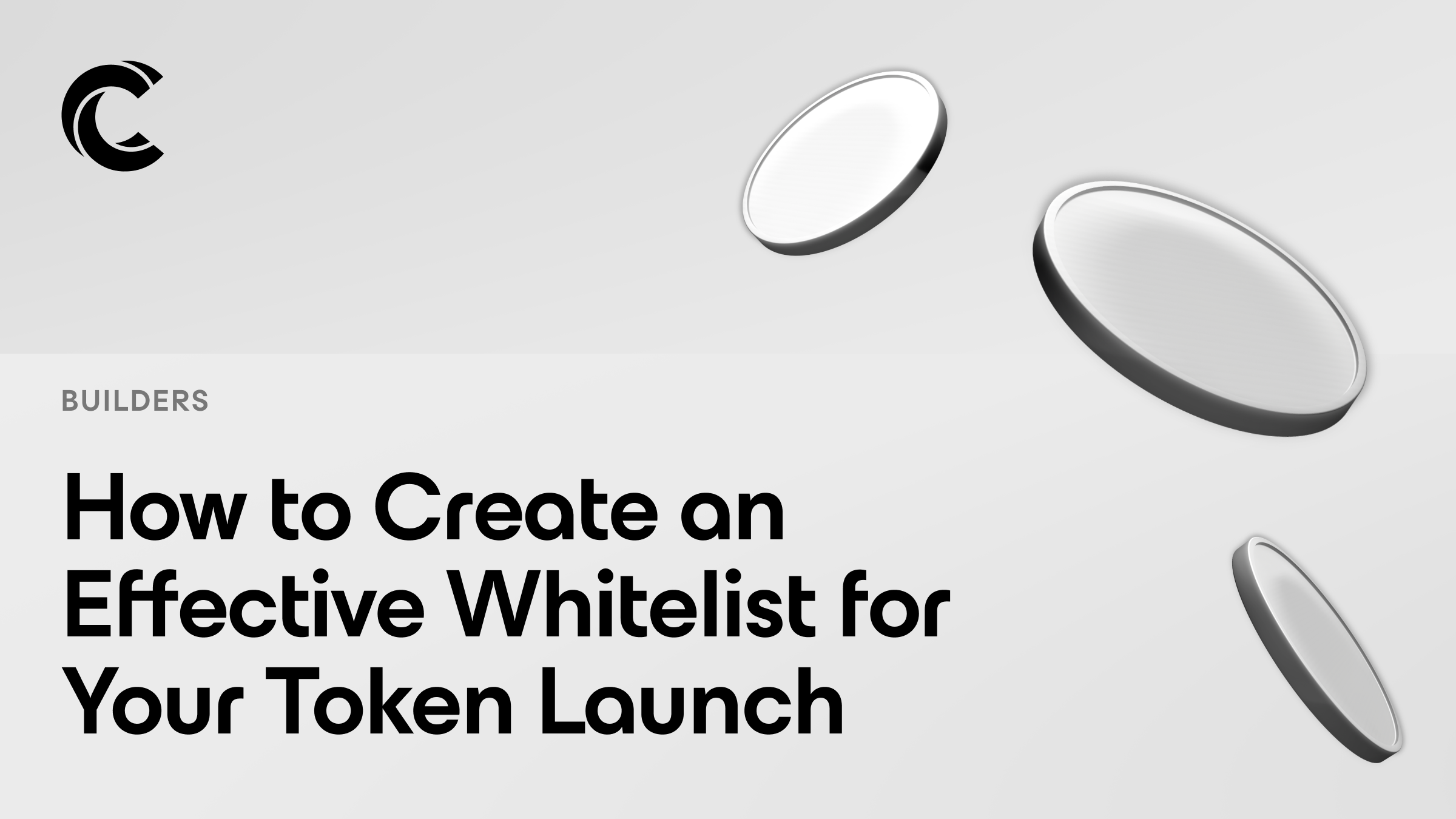How to Create an Effective Whitelist for Your Token Launch: Insights from Builders

A common question builders have when thinking about a token launch goes something like this:
How can we prevent distributing tokens to people who are purely interested in profits and not contributing to the network?
One solution is to create a whitelist, a carefully curated list of persons who are granted priority access to token launches. A well-managed whitelist can attract valuable users, reward early adopters for their efforts, and help projects ensure they have an active and engaged community from day one. That leads to the next question:
How can we determine a loyal user and what criteria should we use to create our whitelist?
Below, we will explore insights from builders who recently launched tokens on CoinList, covering how to identify loyal users, determine the appropriate whitelist size, verify user legitimacy, and maintain robust security measures.
1. Identifying Loyal Users
When selecting users for whitelists, projects can increase their chances of success by looking for users with high levels of community participation and product adoption.
Builders may examine the following factors to identify loyal users:
- On-chain activity (on various chains)
- Transaction history
- Transaction size
- Testnet participation prior to token launch
- Social media and community engagement across multiple touch-points
One builder that launched on CoinList told us, “We looked at the total amount of ETH on various chains that was held on these users’ burner addresses as a kind of primitive predictor that these individuals were likely to participate in our sale. Likewise, we checked that at least a certain percentage of sign-ups had over 1000 Twitter followers."
Another builder stated, “Since 2024, we have cultivated a global network of more than 600 ambassadors and moderators from more than 40 countries. These individuals are an integral part of our core team, actively promoting our new initiatives, testing new products, and supporting our broader community. Additionally, over the past two years of product development, we have nurtured a group of early product users. Our goal was to prioritize these OG groups in our CoinList token launch.”
2. Establishing Size of the Whitelist
The size of a whitelist is significant for achieving a high conversion rate — the percentage of whitelisted users who successfully participate in a token launch.
In general, avoid casting too wide of a net. A loosely defined whitelist with thousands of users may result in only a small fraction (5-10%) securing an allocation in a token launch, leaving many users dissatisfied.
Conversely, a smaller, more selective whitelist is more likely to see higher participation rates (50-70%). The size of the whitelist can vary depending on the number of allocations available, but we typically see around 1,500 and 3,000 users, with a conversion rate of around 50%.
Depending on the scenario, it may be preferable to exclude users who recently participated in a testnet or rewards program. This can help prevent dilution of token distribution, ensuring that more early adopters have the opportunity to acquire the token, and supporting decentralization.
3. Verifying Users to Ensure Legitimacy
Builders using CoinList for token launches typically gather the following information to verify whitelist users:
- EVM addresses: Users without EVM addresses can provide an alternative address (e.g., Solana).
- Email addresses: Collecting email addresses is useful for communicating with users about their whitelist eligibility and other future updates.
According to one builder, their network “offered two registration methods for their whitelist: email and wallet. To ensure accuracy, we conducted extensive manual cross-checking to verify that the whitelisted emails and wallets were linked to users' CoinList accounts. However, guaranteeing 100% accuracy with a comprehensive list proved challenging.”
On CoinList, builders attract and validate community members using cForm, a crypto-native whitelist form that verifies on-chain wallets and social media accounts, and gathers other valuable information without any engineering work. By validating respondent inputs, cForm safeguards against bots and ensures higher-quality responses.
Simply create the form, distribute the shareable link to your community, capture the verified data you need, and get a spreadsheet export of the responses for your whitelist — for free. Try it out.
4. Maintaining Robust Security Measures
It is always important to protect and safeguard users’ information. To prevent unauthorized access to this sensitive data, many builders choose not to store data in the cloud or send it through centralized, non-encrypted messaging applications. Implementing CAPTCHA and other anti-bot challenges on whitelist signups can also help verify legitimate users and enhance security.
While the success of a token launch cannot be guaranteed, creating a whitelist with these considerations in mind can contribute to long-term community growth and engagement. Builders can tailor their approach based on their tokenomics and launch strategy.
Interested in launching a token? Contact us here.
Legal Notice
This blog post is being distributed by CoinList Global Services Ltd., dba “CoinList,” or one of its subsidiaries. CoinList does not provide—and this post shall not be construed as—investment, legal or tax advice. This blog post and use of the CoinList website is subject to certain disclosures, restrictions and risks, available here.
